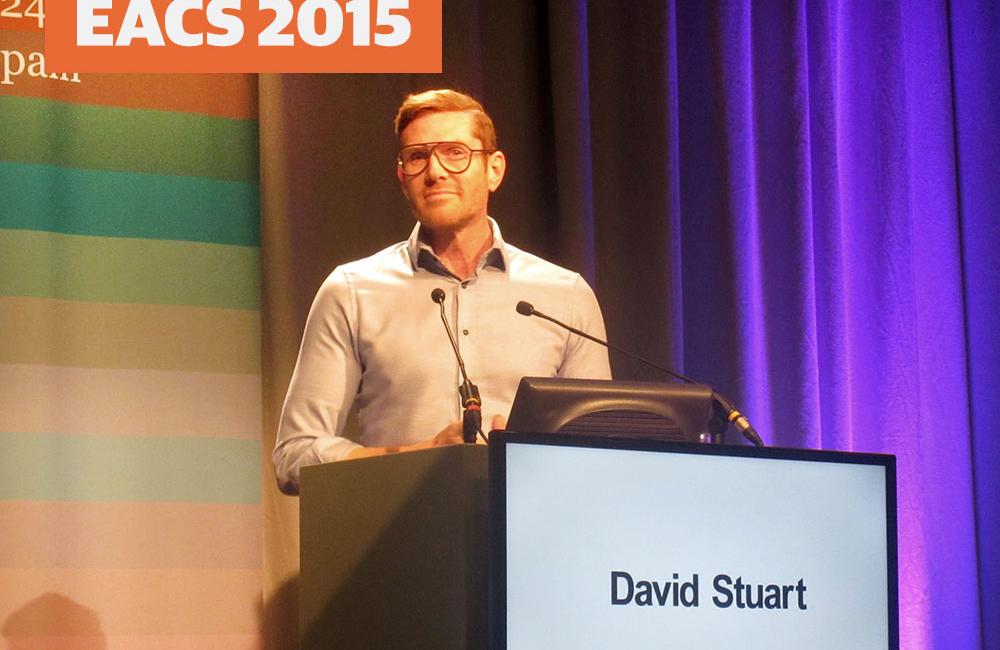
A survey of gay men in London using drugs during sex – chemsex – has shown high levels of unprotected sex and hepatitis C among both HIV-positive and HIV-negative men, high levels of post-exposure prophylaxis use and a high frequency of injecting drug use. The research was presented to the 15th European AIDS Conference in Barcelona, Spain.
Chemsex refers to the use of several drugs with disinhibiting effects during sex, notably crystal methamphetamine, GHB and mephedrone. The drugs heighten sexual desire and arousal, postpone sleep for 24-48 hours, reduce appetite and reduce inhibitions, and as a result they are often used to accompany prolonged sex sessions with multiple partners. Crystal methamphetamine or mephedrone may be injected – often called 'slamming' - to intensify the effect of the drug.
The study investigated patterns of sexual behaviour and drug use among 874 men who attended a chemsex support service over one year at the 56 Dean Street clinic in London, London’s busiest sexual health clinic. 56 Dean Street serves over 11,000 clients a month, 7000 of them men who have sex with men and approximately 3000 of them using drugs.
The chemsex support service sees around 100 gay men each month. It offers sexual health screening, HIV testing and post-exposure prophylaxis (PEP), but markets itself to gay men primarily as a place to get information about drug use, and a place where men can discuss their concerns about drug use in a non-judgmental atmosphere. Some men attending the clinic will already have attended the sexual health clinic and refer themselves to the clinic after a conversation with a nurse or health adviser.
Men who attended the clinic were a self-selecting group who had concerns about drug use during sex and it is unclear to what extent the findings of the survey reflect wider trends in sexual and drug-using behaviour among men who have sex with men in London.
Although the study can’t tell us about the prevalence of chemsex among gay men in London, the large number of men who attended the clinic in one year indicates the need – previous surveys in London have reported that at least 19 to 25% of men attending sexual health services reported using party drugs during sex. The 56 Dean Street study found that 70% of individuals attending the clinic reported no chem-free sex whatsoever in the previous six months, indicating a high level of dependency on drugs to achieve sexual intimacy – and a very high frequency of drug use among clinic attendees. “Most men couldn’t remember their last sober sex,” David Stuart, the services Substance Abuse Lead, said.
Thirty-two per cent of men were living with HIV (280 men). This includes 42 men who were not taking antiretroviral treatment and the majority of these men reported no condom use (64%). Attendees with HIV tended to report accelerating use of drugs for sex after their HIV diagnosis. Among men on treatment, condom use was somewhat higher, although 51% reported using condoms on less than half the occasions they had sex and 25% reported no condom use. Poor adherence sufficient to lead to viral rebound – and a risk of onward transmission – was not identified.
Condom use among HIV-negative men was mixed: 40% reported using condoms on less than half the occasions they had sex, and 10% reported no condom use at all. David Stuart told the conference that starting in 2012, staff at the clinic began to notice that around 80% of requests for PEP were connected with episodes of chemsex. Thirty per cent of HIV-negative men attending the clinic had taken PEP at least once in the past two years and 25% had taken it between two and ten times in the previous two years. Unsurprisingly, there was a high level of interest in pre-exposure prophylaxis (PrEP): 42% of men expressed an interest in using it, but one-third of men knew nothing about it.
The low levels of condom use and the high numbers of partners reported in each episode of chemsex show the potential for rapid transmission of HIV and other sexually transmitted infections, the researchers warned. Forty-five per cent of men reported between four and ten partners per episode of chemsex, and 11% reported an average of ten or more per episode, with chemsex sessions lasting anywhere from 12 to 48 hours.
Hepatitis C was also highly prevalent among men attending the clinic: 12% of all men had tested positive for hepatitis C virus (HCV) at least once, and just over half of the men who tested positive for HCV were HIV-negative (52%). Thirty-two per cent of men who had tested positive for HCV had been infected on more than one occasion. Twenty-nine per cent of all men attending the clinic said that they had injected drugs (37% of all those who attended the clinic left this question unanswered – in contrast questions about condom use were answered by almost all attendees – suggesting a high level of shame regarding injecting practices). Yet 46% of all those attending the clinic who tested positive for HCV said that they had never injected drugs, indicating a high frequency of transmission through blood exposure during sexual activity.
Among those who reported injecting drugs, sharing of injecting equipment was common: 23% said that they had shared needles, and 27% said that they had never injected themselves, but had been injected by a sexual partner.
Harm reduction advice
Detailed advice on how to reduce any harmful effects of drug use can be found on the THT Friday to Monday web pages and in GMFA’s Safer Chems web pages.
D Stuart et al. ChemSex: data on recreational drug use and sexual behavior in men who have sex with men (MSM) from a busy sexual health clinic in London, UK. 15th European AIDS Conference, Barcelona, abstract BPD2/8, 2015.
